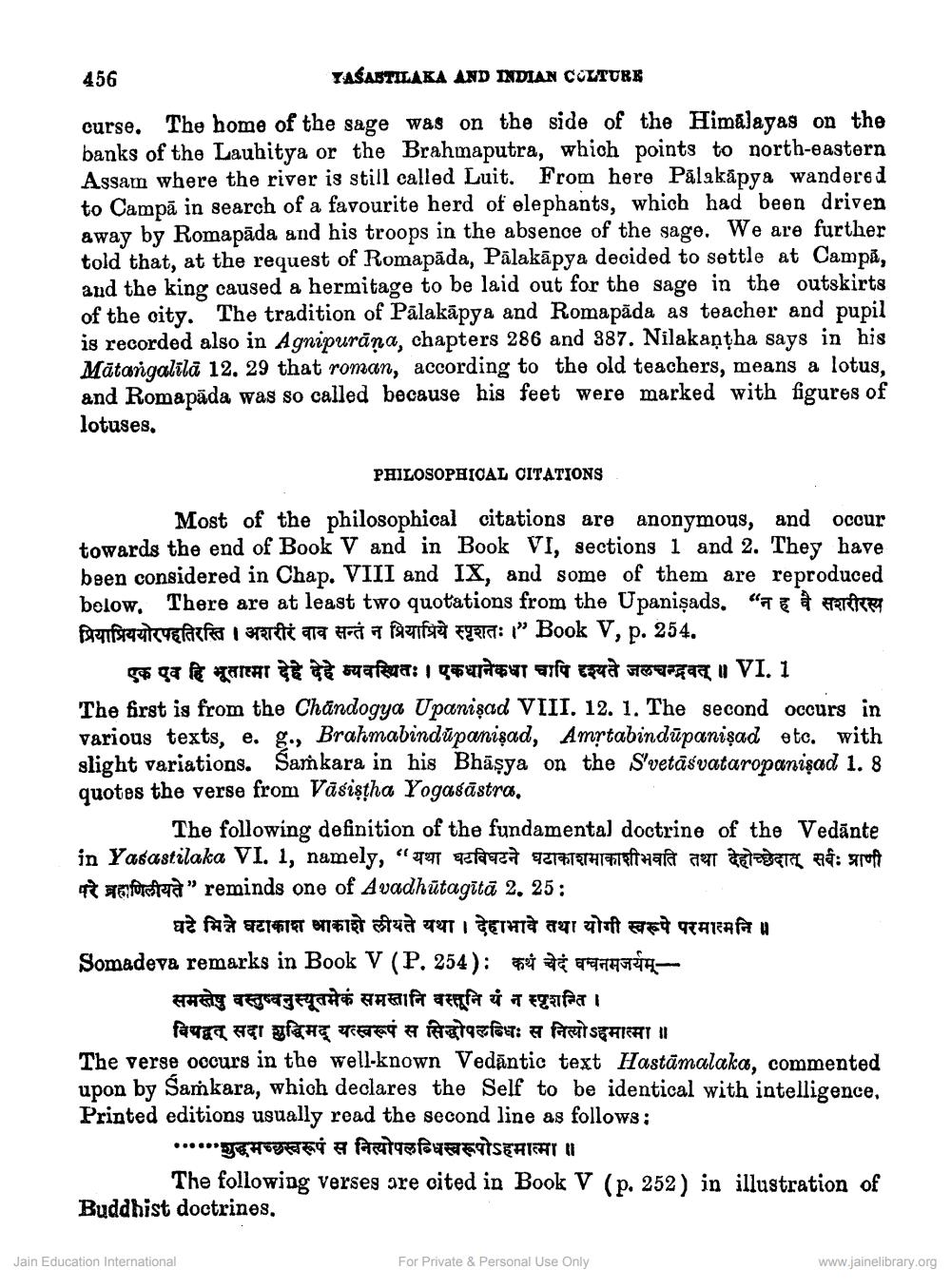________________
456
YAŠASTILAKA AND INDIAN CULTURE
curse. The home of the sage was on the side of the Himalayas on the banks of the Lauhitya or the Brahmaputra, which points to north-eastern Assam where the river is still called Luit. From here Palakäpya wandered to Campā in search of a favourite herd of elephants, which had been driven away by Romapāda and his troops in the absence of the sage. We are further told that, at the request of Romapāda, Pālakāpya decided to settle at Campā, and the king caused a hermitage to be laid out for the sage in the outskirts of the city. The tradition of Pālakāpya and Romapāda as teacher and pupil is recorded also in Agnipurana, chapters 286 and 387. Nilakantha says in his Mātangalīlā 12. 29 that roman, according to the old teachers, means a lotus, and Romapäda was so called because his feet were marked with figures of lotuses.
PHILOSOPHICAL CITATIONS
Most of the philosophical citations are anonymous, and occur towards the end of Book V and in Book VI, sections 1 and 2. They have been considered in Chap. VIII and IX, and some of them are reproduced below. There are at least two quotations from the Upanişads." TATRA Pensrautcmefarfa i aparati ang pria fazifa fyric: 1" Book V, p. 254.
एक एव हि भूतात्मा देहे देहे व्यवस्थितः । एकधानेकधा चापि दृश्यते जलचन्द्रवत् ॥ VI. 1 The first is from the Chandogya Upanişad VIII. 12. 1. The second occurs in
pus texts, e. g., Brahmabindūpanişad, Amrtabindūpanişad etc. with slight variations. Samkara in his Bhāșya on the S'vetāsvataropanişad 1. 8 quotes the verse from Väsiştha Yogasāstra.
The following definition of the fundamental doctrine of the Vedānte in Yasastilaka VI. 1, namely, "Te gafaza 4377TTHIEFifthala a ESETL ná: Stroft pateforstad" reminds one of Avadhūtagītā 2. 25:
घटे मिन्ने घटाकाश आकाशे लीयते यथा। देहाभावे तथा योगी स्वरूपे परमात्मनि ॥ Somadeva remarks in Book V (P. 254): * THE
समस्तेषु वस्तुष्वनुस्यूतमेकं समस्तानि वस्तूनि यं न स्पृशन्ति ।
विपद्वत् सदा शुद्धिमद् यत्स्वरूपं स सिद्धोपलब्धिः स निस्योऽहमात्मा ॥ The verse occurs in the well-known Vedāntic text Hastāmalaka, commented upon by Samkara, which declares the Self to be identical with intelligence, Printed editions usually read the second line as follows:
...Y HEYETET facit alueetSEAT I
The following verses are cited in Book V (p. 252) in illustration of Buddhist doctrines,
Jain Education International
For Private & Personal Use Only
www.jainelibrary.org




